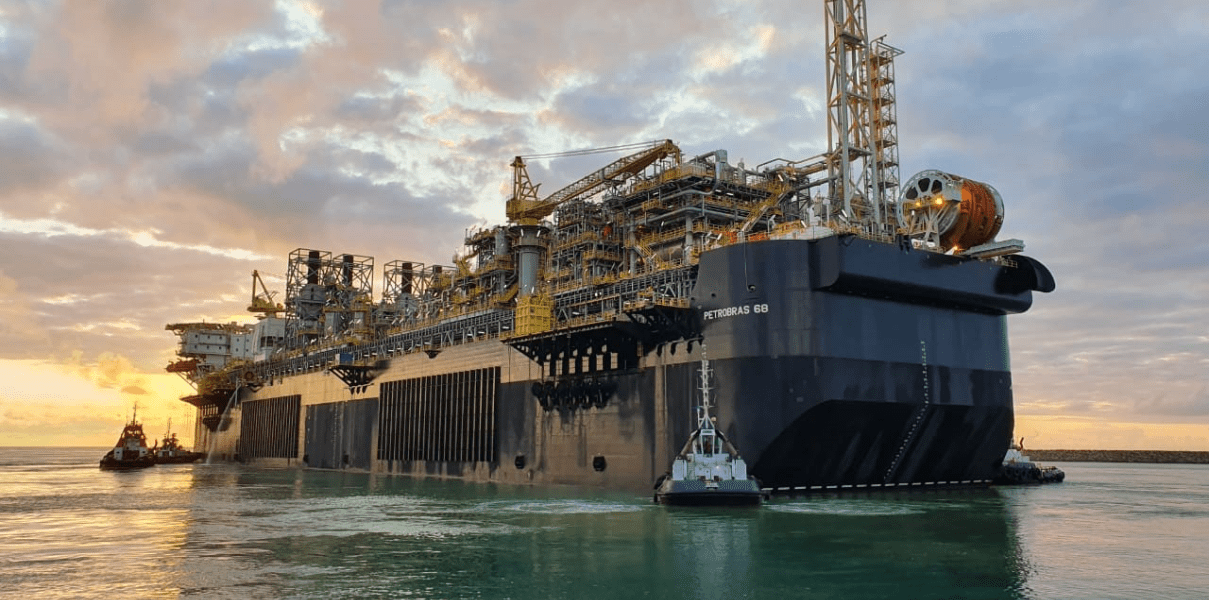(S&P Global Platts) Petrobras will boost investment spending over the next five years amid a recovery in global demand, with development of the massive Buzios Field in the country’s subsalt frontier expected to push crude oil output to 2.6 million b/d by 2026, the Brazilian state-led oil company said.
It outlined $68 billion worth of investments for the 2022-2026 period, up from $55 billion under the previous five-year plan, Petrobras said in a regulatory filing Nov. 24. About 84% of the spending will be focused on exploration and production, particularly in the subsalt frontier, according to the plan.
“The company will maintain its focus on what it does best: explore and produce oil and natural gas in deep- and ultra-deep waters, especially in the subsalt,” CEO Joaquim Silva e Luna said during a Nov. 25 conference call with analysts and investors.
Petrobras joined its global oil industry peers in announcing spending increases for 2022 and beyond amid pandemic-related supply concerns and surging prices.
Oil companies dramatically cut spending because of coronavirus-led uncertainties in 2020 and now must boost investments to lift supply as demand returns.
Petrobras’ investments in 2022 will be in line with the previous plan, with spending fixed at $11 billion, it said. The biggest spending increases will come in 2023-2025, when investments will average $15 billion per year, compared with $11.3 billion annually under the previous plan.
The company’s production is expected to gradually rise over the next five years, but asset sales and the pandemic will likely undermine near-term output, it said. Oil output is expected to retreat to about 2.1 million b/d in 2022, down about 100,000 b/d from the previous investment plan, Petrobras said.
“The primary impact was from the divestment in Buzios,” said Fernando Borges, the company’s director for exploration and production.
China National Offshore Oil Corp. exercised its right to take an additional 5% equity stake in Buzios. Upon the completion of the deal, Petrobras will hold an 85% operating stake in the Buzios production sharing area, CNOOC 10% and China National Petroleum Corp., or CNPC, 5%.
Petrobras is also in talks to sell several major legacy deep-water fields, such as Albacora and Albacora Leste, the company said.
Asset sales alone were expected to account for lost output of about 50,000 b/d of oil equivalent in 2022 before rising to an average of 250,000 boe/d in 2023-2026. That was offset by the company’s decision to remove the Marlim Field from the sales program ahead of a revitalization project that will be completed in 2023.
Production will increase by about 100,000 b/d each year, with Petrobras targeting oil output of 2.6 million b/d in 2026, the company said. Subsalt fields will account for 79% of the company’s production.
Total hydrocarbons output is also expected to remain stable at 2.7 million boe/d in 2022, Petrobras said. Production growth is expected to push oil and natural gas output to 3.2 million boe/d by 2026.
New FPSOs
Petrobras’ output will be buoyed by the addition of 15 new floating production, storage, and offloading vessels, or FPSOS, at six separate fields over the five-year period, it said. That was up from 13 new FPSOs at six fields under the previous plan.
Petrobras added three FPSOs in 2026, including the first production unit at the Sergipe-Alagoas deep-water project. The Sergipe-Alagoas project will open a new production frontier on Brazil’s northeast coast. Petrobras made more than a dozen oil and gas discoveries in the region in the early 2010s, but the project has been delayed by the company’s focus on larger fields in the subsalt.
The FPSO SEAP-1 will have an installed capacity to pump 120,000 b/d, according to the plan.
Petrobras will also add the ninth and 10th FPSOs to the Buzios Field in 2026, installing the largest offshore production units in Brazil at 225,000 b/d capacity, according to the company. The FPSOs are currently out for public bids.
The COVID-19 pandemic, however, will cause a minor production delay, Petrobras said. The company was forced to delay first oil from the FPSO Almirante Barroso, which will be the fifth FPSO installed at Buzios. Construction delays at the shipyard will push the FPSO’s installation until 2023, from 2022, previously.
Petrobras will also reduce the volume of expected asset sales after the company reached its debt target of $60 billion in the third quarter, about a year ahead of schedule, said CFO Rodrigo Araujo. Petrobras now expects to sell $15 billion-$25 billion worth of assets over the next five years, down from $25 billion-$35 billion under the previous plan.
Most of the cash would be raised from refinery sales, where Petrobras must shed eight of its 13 operated refineries by end-2022 under an antitrust agreement. So far, Petrobras has agreed to sell just three of the facilities. Talks for two additional refineries are underway, while the company will have to restart the sales process for three other units.




